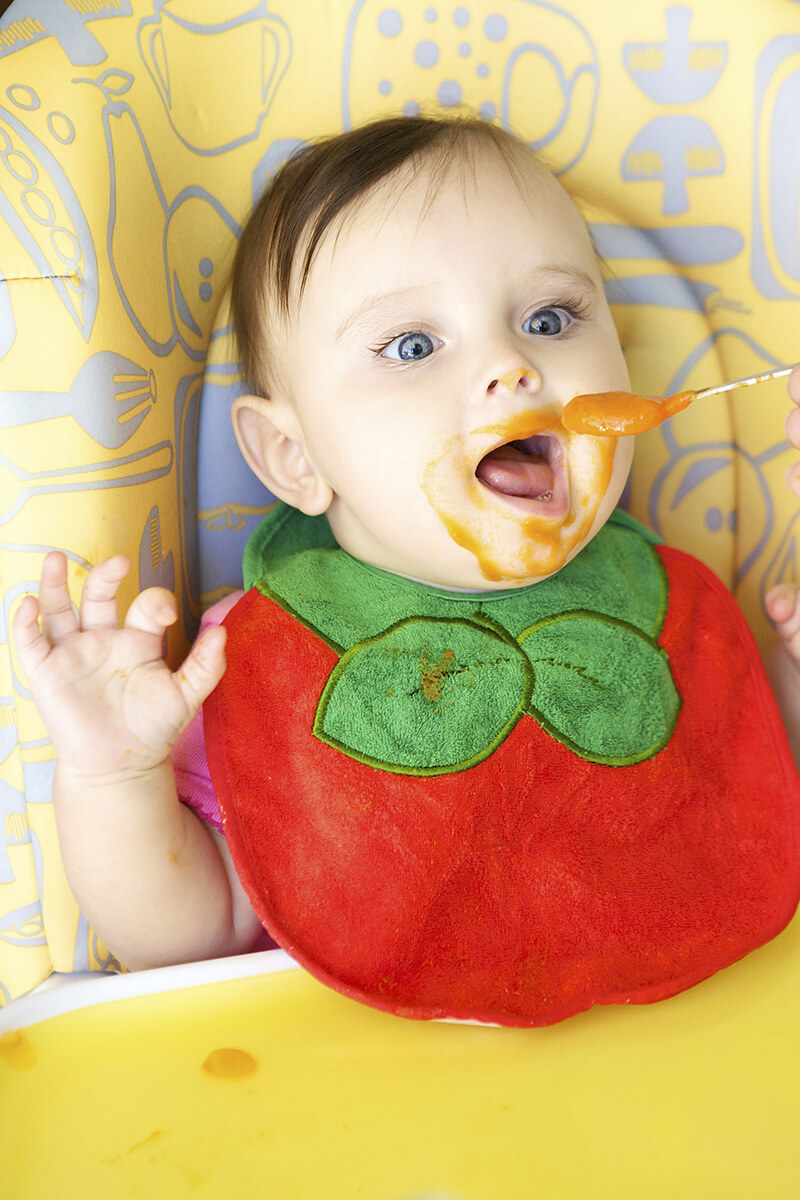Making homemade baby food just got easier

iStock
There are a lot of reasons why making your own baby food is an attractive option. (The financial savings and fresher ingredients alone were enough to bring me around.) But when I talk with a lot of new moms, many seem intimidated by the idea. The time crunch and perceived hassle leave them turned off entirely.
The truth is that whipping up homemade baby food doesn’t have to be a time-consuming, cumbersome affair—especially if you follow these expert tips. Natalie Monson, a registered dietitian, mother of three, and owner of Super Healthy Kids, offers up her favorite hacks.
YOU DON’T NEED FANCY EQUIPMENT
New culinary trends often bring about high-tech gadgets and gizmos designed to make the job easier. Don’t get us wrong; the Baby Bullet probably does make amazing baby food. But if you’d like to save some counter space (and $60 bucks), you can probably get by on equipment you already have.
“I have a Blendtec that came with twister jars that are great for making baby food,” says Monson. “And once you start getting into the meats and more mixed foods, a food processor also works really well.”
You can also smash up fruit or steamed veggies either by hand or with regular utensils. For example, a fork is the perfect tool for mushing up a ripe banana, which can then be hand-fed to your little one.
INVEST IN THE BASICS
Stroll down the baby aisle at any grocery store and you’ll see rows and rows of little squeeze-pouches of premade baby food. This trend has picked up major steam over the last few years, and with good reason—they’re quick, easy and convenient.
They can also be a bit pricy. Fortunately, parents can now buy reusable squeeze-pouches for their homemade food. Monson particularly likes the Little Green Pouch brand.
“On the bottom, it’s like a Ziploc that you can open to put the food in, and it zips tight so it doesn’t leak,” she says. “You just unscrew the cap and squeeze the food out.”
She adds that you can also make food in batches, and then freeze them in the reusable pouches. Since they defrost so quickly, they make for a great grab-and-go option. While some manufacturers also sell little devices that will fill up the pouch for you, Monson says that a small funnel works just as well.
Back when I was making baby food three years ago, freezing the mix in ice cube trays was a brilliant hack that took the stress out of measuring portion sizes. Today, Monson says she uses silicone trays with snap-on lids. (Oh, how I wish I’d had this!)
“I like it because your ice cube tray is just open in your freezer, so the food doesn’t last as long,” she says. “These silicone trays are awesome; you just pop one out whenever you need it and snap the lid back on.”
MAKING SEPARATE MEALS ISN’T ALWAYS NECESSARY
Many parents with infants assume that dinner consists of two meals—one for the baby and one for the rest of the family. But Monson says that as your little one grows a bit bigger, cooking double meals isn’t necessary.
“A lot of times, parents think they have to make something totally separate for their baby, but once they’re eight or nine months, they can really eat mostly what you’re eating—just in a softer form,” says Monson.
This little trick was a lifesaver for me. (Being a full-time working mom of two in New York City left little time for cooking.) If my husband and I were eating chicken with broccoli and rice, then our little one had the same thing—only pureed with a little applesauce thrown in.
“Babies really don’t care if their foods are mixed,” adds Monson.
To prevent meats from tasting dry, she advises mixing them with fruits and veggies like sweet potatoes, apples or pears. This will sweeten up the taste while adding some much-needed moisture to the meal.


















